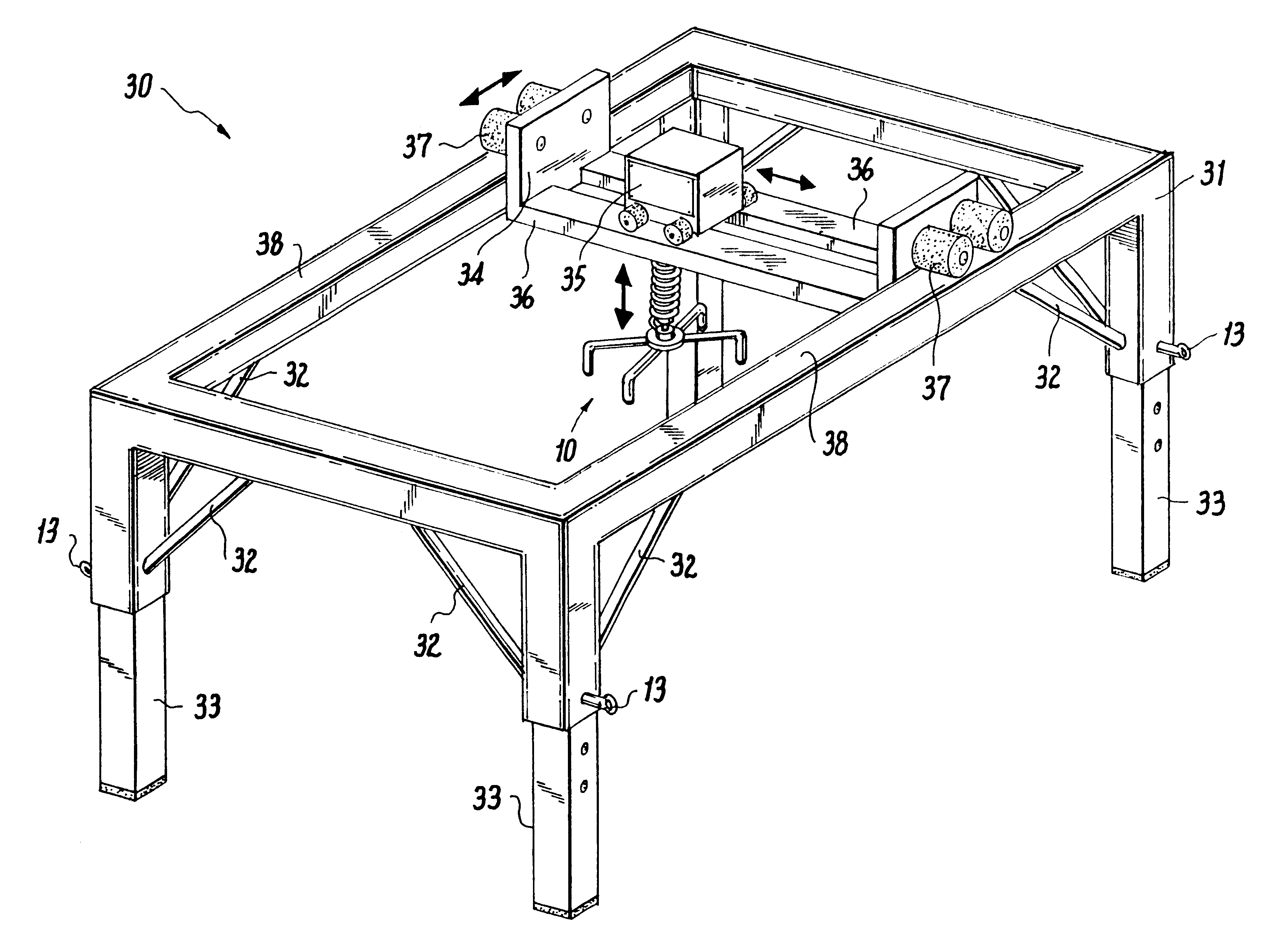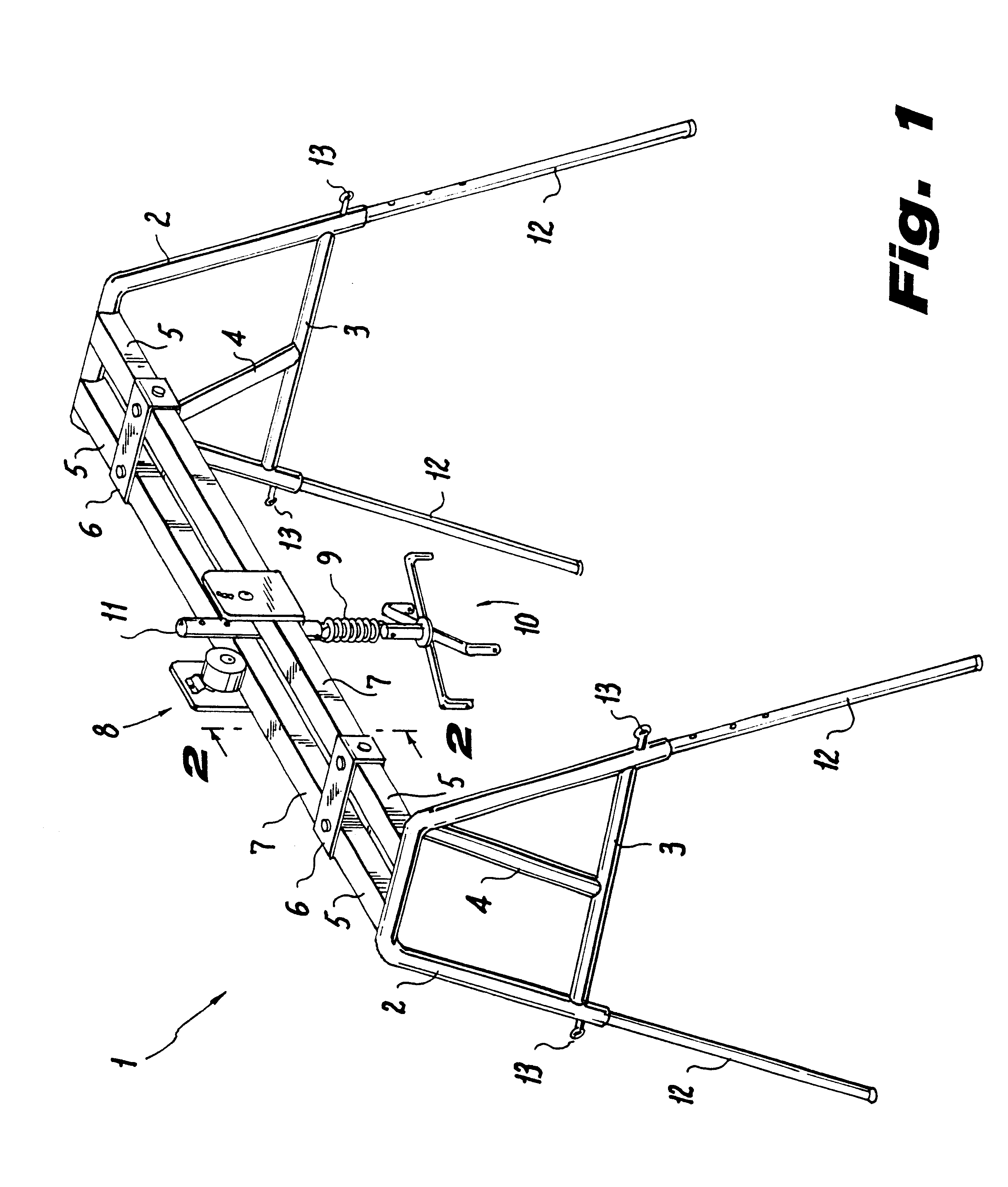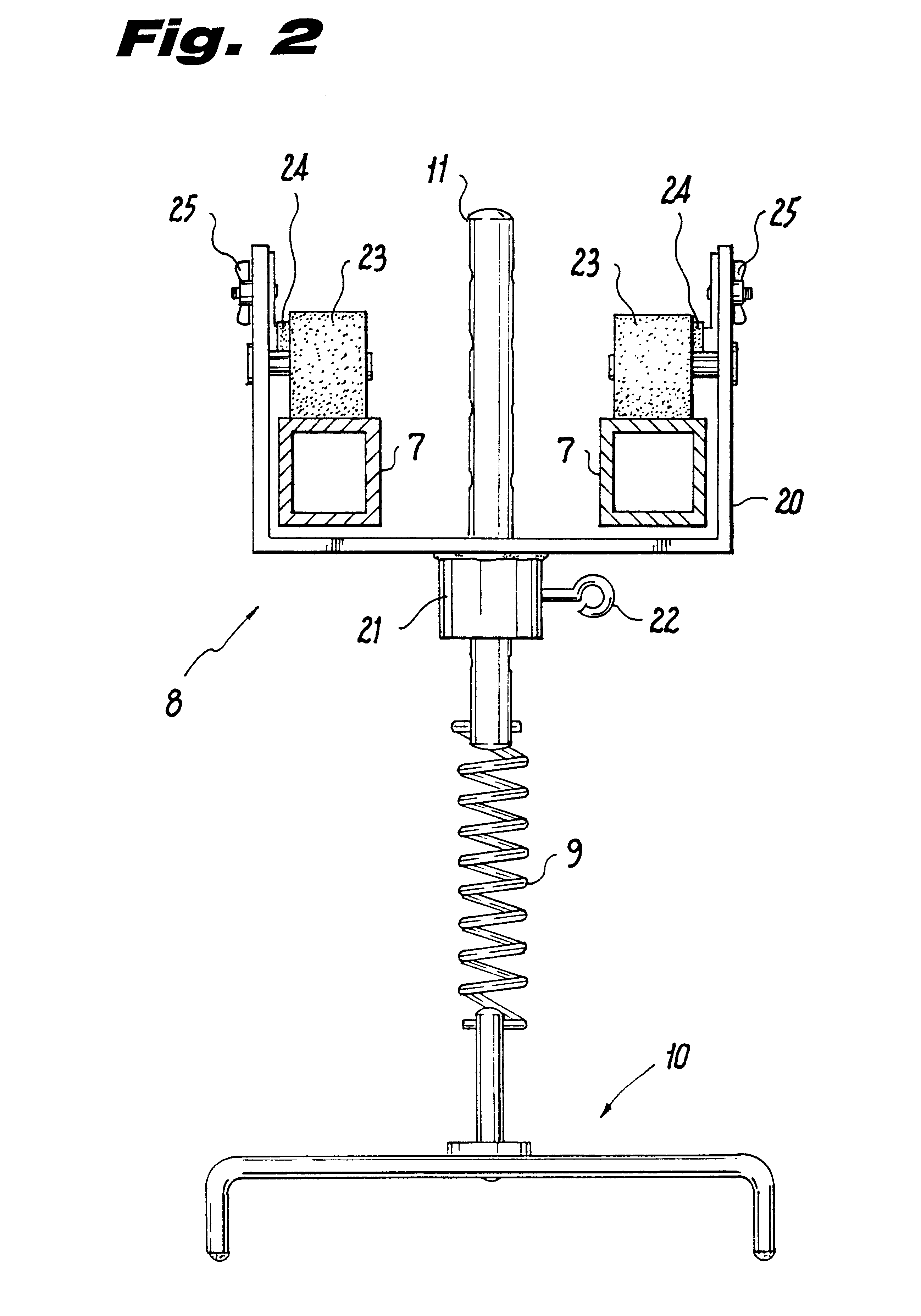Method and apparatus to exercise developmentally delayed persons
a technology for developing disabled children and exercise equipment, applied in the field of methods and equipment for developing disabled people, can solve the problems of restricting the transition into alternative postures, restricting the promotion of weight bearing activities, and restricting the transition to alternative postures, so as to achieve the effect of necessary strength
- Summary
- Abstract
- Description
- Claims
- Application Information
AI Technical Summary
Benefits of technology
Problems solved by technology
Method used
Image
Examples
Embodiment Construction
The frame 1 of the gliding support device of the present invention shown in FIG. 1 is intended for home use. As such, it is constructed of lightweight steel or aluminum tubing with features for ease of transporting and assembly.
Although many difficult structural configurations are applicable, in the preferred embodiment, the two top end sections are pre-assembled and include welded parts for maximum rigidity. They each have a bent tubing member 2, cross brace 3, rail end extensions 5, rail attachment member 6 and angled brace 4. The structure is completed by adding rails 7 and legs 12 which have a telescopic fit in end sections 2 and are adjustable for height with the aid of pring pins 13 which fit in the desired adjustment hole. A rolley subassembly 8 completes the home support track.
FIG. 2 shows details of trolley 8 including frame 20, support rollers 23 (which roll on the top surface of rails 7), adjustable height rod 11, collar 21, and spring pin 22 for adjusting height.
Also inc...
PUM
 Login to View More
Login to View More Abstract
Description
Claims
Application Information
 Login to View More
Login to View More - R&D
- Intellectual Property
- Life Sciences
- Materials
- Tech Scout
- Unparalleled Data Quality
- Higher Quality Content
- 60% Fewer Hallucinations
Browse by: Latest US Patents, China's latest patents, Technical Efficacy Thesaurus, Application Domain, Technology Topic, Popular Technical Reports.
© 2025 PatSnap. All rights reserved.Legal|Privacy policy|Modern Slavery Act Transparency Statement|Sitemap|About US| Contact US: help@patsnap.com



